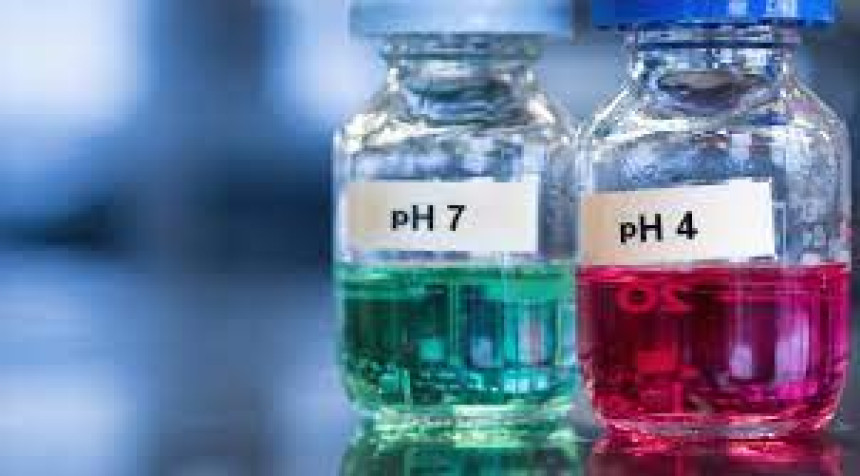
Acids and Bases
Understanding Acids and Bases: A Guide for School Goers
Understanding Acids and Bases: A Guide for School Goers
Acids and bases are important concepts in chemistry that students encounter during their school years. Understanding these concepts is vital as they form the foundation of various scientific principles. In this blog, we will delve into the fascinating world of acids and bases, explaining their properties, definitions, and applications.
What are Acids?
An acid is a chemical substance that dissociates in water to produce hydrogen ions (H+). It is characterized by its sour taste, corrosive nature, and ability to turn blue litmus paper red. Acids are found commonly in our daily lives. For example, vinegar contains acetic acid, citrus fruits contain citric acid, and even our stomach acid aids in digestion.
Properties of Acids
Acids have several distinguishing properties:
- Sour Taste: Acids taste sour, like lemons or vinegar.
- Corrosive: They have corrosive properties, which means they can react with and damage certain materials.
- pH Levels: Acids have a pH value less than 7 on the pH scale. The lower the pH value, the stronger the acid.
- Reactivity with Metals: Acids can react with certain metals, producing hydrogen gas as a byproduct.
Examples of Acids
Here are some common examples of acids:
- Hydrochloric Acid (HCl): Found in our stomach and is responsible for aiding digestion.
- Sulfuric Acid (H2SO4): Used in car batteries and industrial processes.
- Nitric Acid (HNO3): Used in the production of fertilizers and explosives.
What are Bases?
A base, also known as an alkali, is a chemical substance that releases hydroxide ions (OH-) when dissolved in water. Bases have a bitter taste, feel slippery to the touch, and turn red litmus paper blue. They are commonly used in household cleaning products, such as soaps and detergents.
Properties of Bases
Bases share several properties:
- Bitter Taste: Bases taste bitter, like baking soda or soap.
- Slippery Feel: Bases feel slippery to the touch.
- pH Levels: Bases have a pH value greater than 7 on the pH scale. The higher the pH value, the stronger the base.
- Reaction with Acids: Bases can react with acids to form salt and water through a process called neutralization.
Examples of Bases
Here are some common examples of bases:
- Sodium Hydroxide (NaOH): Used in the manufacturing of soap and detergents.
- Ammonia (NH3): Found in cleaning agents and fertilizers.
- Magnesium Hydroxide (Mg(OH)2): Used in antacids to neutralize stomach acid.
Acid-Base Reactions
Acids and bases can undergo a chemical reaction known as an acid-base reaction or neutralization reaction. During this reaction, the hydrogen ions from the acid combine with the hydroxide ions from the base to form water and a salt. The pH level of the resulting solution is neutral, which means it has a pH of 7 on the pH scale.
For example, when hydrochloric acid reacts with sodium hydroxide, it forms sodium chloride (salt) and water:
HCl + NaOH → NaCl + H2O
Applications of Acids and Bases
Acids and bases have a wide range of applications in various fields:
- Industry: Acids are used in industrial processes such as metal cleaning and purification.
- Medicine: Acids and bases play a significant role in the production of medications and pharmaceuticals.
- Agriculture: Bases are used in the production of fertilizers, which help enhance crop growth.
- Environmental Protection: Acids and bases are utilized in water treatment plants to adjust pH levels, ensuring safe water for consumption.
Conclusion
Understanding acids and bases is crucial for students as they provide a fundamental understanding of chemistry. Acids and bases have distinct properties and react in various ways. By comprehending their characteristics and applications, students can further explore the fascinating field of chemistry.
Frequently Asked Questions about Acids and Bases
1. What is the pH scale?
The pH scale is a measure of the acidity or alkalinity of a substance. It ranges from 0 to 14, with 7 being considered neutral. A pH value less than 7 indicates acidity, while a pH value greater than 7 indicates alkalinity.
2. Are all acids corrosive?
No, not all acids are corrosive. The corrosiveness of an acid depends on its concentration and the materials it comes into contact with. Some acids, such as weak acids found in fruits, are not corrosive.
3. How do acids and bases affect the environment?
Acid rain, caused mainly by sulfuric and nitric acids, has a detrimental effect on the environment. It can harm plants, aquatic life, and erode buildings and statues. Bases, when improperly disposed of, can also pose a threat to the environment.
4. Can a substance be both an acid and a base?
Yes, a substance can act as both an acid and a base, depending on the conditions. This property is known as amphoteric. Water is an example of an amphoteric substance.
5. Why are acids and bases important in daily life?
Acids and bases are present in various aspects of daily life. They are used in cooking, cleaning, medicine, and agriculture. Understanding their properties and applications allows us to harness their benefits while staying safe.





